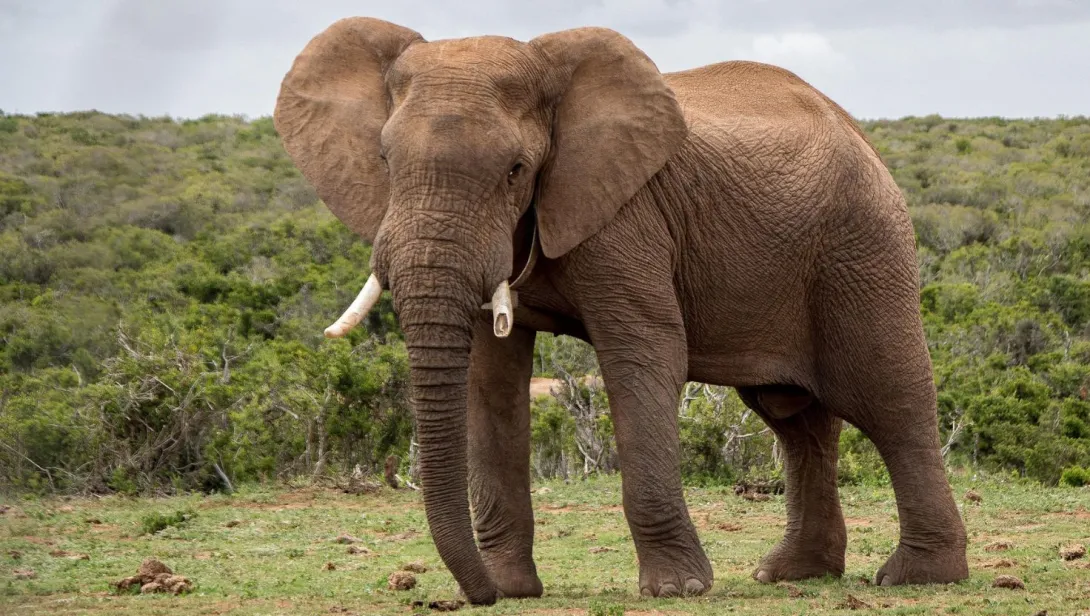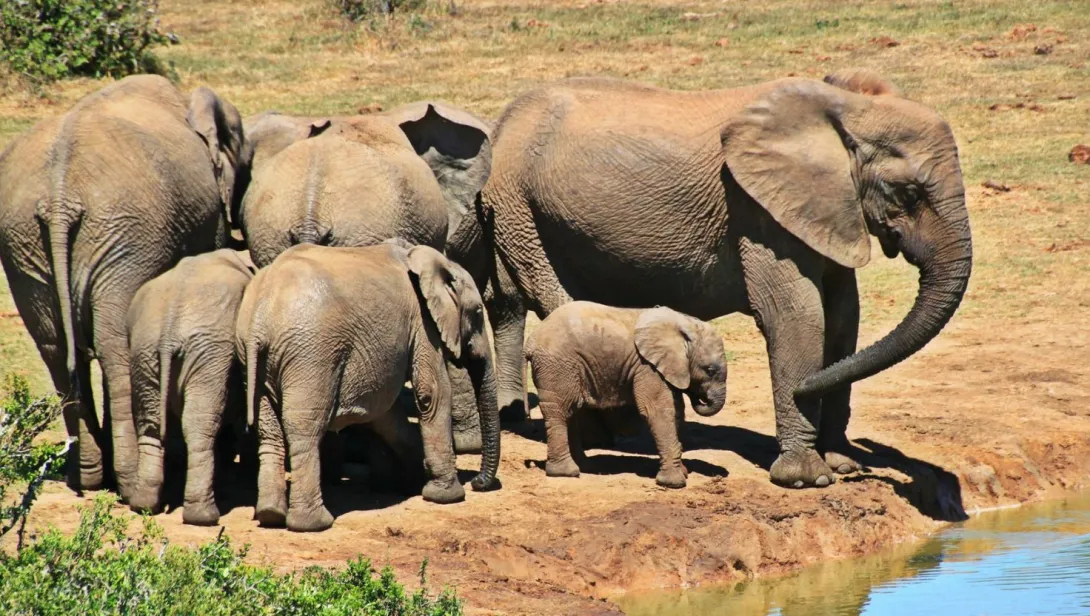Skip to main content
Introduction
- The African Elephant (Loxodonta africana) is the largest land animal on Earth.
- They are known for their massive size, long trunks, and large ears.
- African Elephants are highly intelligent and social animals, living in complex matriarchal herds.
Physical Characteristics
- African Elephants have a massive, robust body, with males weighing between 10,000 to 14,000 pounds (4,500 to 6,300 kg) and females slightly smaller.
- Their skin is thick and gray, with sparse hair covering their bodies.
- They have long trunks used for breathing, smelling, touching, grasping, and producing sound.
- African Elephants have large ears that help regulate their body temperature.
Habitat and Distribution
- African Elephants are found in sub-Saharan Africa, including countries like Kenya, Tanzania, and Botswana.
- They inhabit a variety of environments, including savannas, forests, deserts, and marshes.
- African Elephants are nomadic, covering large territories in search of food and water.
Diet and Foraging
- African Elephants are herbivorous and primarily feed on grasses, leaves, bark, fruits, and roots.
- They consume up to 300 pounds (136 kg) of food and 50 gallons (190 liters) of water daily.
- African Elephants use their trunks to pluck leaves and their tusks to strip bark from trees.
- They are keystone species, playing a crucial role in maintaining the balance of their ecosystems.
Behavior and Communication
- African Elephants live in matriarchal herds led by the oldest and most experienced female.
- They communicate through vocalizations such as trumpets, rumbles, and growls, as well as through body language.
- African Elephants are highly social, with strong bonds within the herd.
- They are territorial and mark their territory with scent markings.
Reproduction and Lifespan
- Female African Elephants give birth to one calf after a gestation period of about 22 months.
- Calves are born weighing around 200 pounds (90 kg) and are cared for by the entire herd.
- Calves stay with the herd for several years before becoming independent.
- African Elephants have a lifespan of 60 to 70 years in the wild and up to 80 years in captivity.
Conservation Status
- African Elephants are classified as Vulnerable on the IUCN Red List, with populations declining due to poaching and habitat loss.
- They are threatened by habitat loss, human-wildlife conflict, and poaching for their ivory tusks.
- Conservation efforts include protected areas, anti-poaching measures, and community-based conservation programs.
Unique Adaptations
- African Elephants have large ears that help regulate their body temperature by dissipating heat.
- Their long trunks are highly versatile and used for various tasks, including feeding, drinking, and communication.
- They have thick skin that protects them from the sun and insect bites.
- African Elephants are highly intelligent and capable of solving complex problems.
Cultural Significance
- African Elephants are revered in many African cultures as symbols of strength, wisdom, and longevity.
- They are featured in mythology, literature, and art across Africa.
- In some cultures, African Elephants are considered spiritual guides and protectors.
Fun Facts
- African Elephants can run at speeds of up to 25 mph (40 km/h).
- They are highly social animals, with strong bonds within the herd.
- African Elephants can travel up to 50 miles (80 km) in a single day in search of food and water.
- They are keystone species, playing a crucial role in maintaining ecosystem balance.
- African Elephants are highly intelligent and capable of solving complex problems.
- They are not true dogs but are more closely related to wolves and jackals.
Threats to African Elephants
- Habitat loss due to agriculture and urbanization is a major threat to African Elephants.
- Human-wildlife conflict often results in African Elephants being killed by farmers protecting crops.
- Poaching for their ivory tusks is a significant cause of their decline.
- Climate change is altering their habitats, making it harder for them to find food and water.
Conservation Efforts
- Protected areas and wildlife reserves have been established to safeguard African Elephant habitats.
- Anti-poaching initiatives and stricter wildlife protection laws have helped reduce illegal hunting.
- Community-based conservation programs work to reduce human-wildlife conflict.
- Global awareness campaigns highlight the importance of African Elephant conservation and encourage public support.

